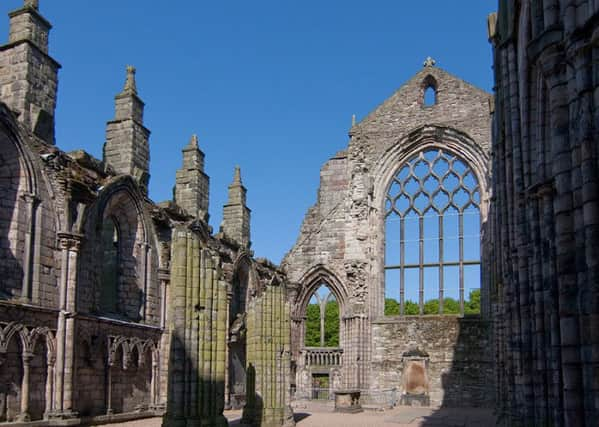Falkirk's connection with the abbots


We have Abbotsford, Abbotsgrange, Abbotsinch, Abbotshaugh and others including the old Abbeytown Bridge near Airth. Although some of these probably date to an early Celtic religious foundation the main answer lies much later in the 12th and 13th centuries with gifts made by two of the most powerful men in Scotland.
The first came in 1166 when Richard, Bishop of St Andrews, gifted the church at Falkirk (which he called ‘Eiglesbrec’) and its revenues to “the church of Holyrood and the canons serving God there”. That was the start of a steady drain of local earnings to help build the new abbey which stands today as a picturesque ruin at the bottom of the Canongate in Edinburgh.
Advertisement
Hide AdAdvertisement
Hide AdThe following century King Alexander II handed over a huge swathe of land covering much of the Braes area, most of where Grangemouth stands today, and parts of Falkirk to the same Augustinians who were already in possession of the church at Falkirk. The new ‘‘gift’’ was originally part of the lands of Callendar and eventually formed the great Barony of Abbotskerse, very rich pickings indeed for the canons.
Managing the land well was important to their order which established an administrative centre in what is now Grangemouth’s Zetland Park. Here they built a ‘‘grange’’, the name given to farms and farm buildings linked to religious foundations. Lay brothers would have been responsible for overseeing the work and manor house and granary would probably have been erected on the site
The local stream which supplied the settlement with water and access to the sea took on the name Grange Burn which at a later date was transferred to the new village on the Carron/Forth called at first Grangeburnmouth then Grangemouth. The earliest maps of the area show the site of the grange near the later outdoor swimming pool and there is some archaeological evidence of the existence of old buildings in the area.
Another local link is in the coat of arms of Grangemouth. Legends tell us that in the 12th century King David I was out hunting when he was attacked by a white stag. He thought his number was up and he whispered a silent prayer. He looked up and saw a cross shining between the antlers of the stag and took that as a sign that he would survive the attack. In the instant he promised to found an abbey near the spot which he did in 1128.
Advertisement
Hide AdAdvertisement
Hide AdHe presented the canons with the ‘black rood’ or cross, said to have been a relic of the true cross brought to Scotland by his mother St Margaret and which is the ‘‘Holy Rood’’ of the abbey name. This was allegedly pinched by King Edward I at the same time as he ran away with the Stone of Destiny in 1296 but some versions of the story have it coming back north in 1328 only to be lost again by King David II at the Battle of Neville’s Cross near Durham. After a spell in the local cathedral it vanished!
The symbol of the cross and the antlers was adopted by the Abbey which is why it features on the Grangemouth coat of arms along with the Charlotte Dundas.
So the next time you are in Edinburgh take a trip to the abbey and admire its fine carvings – your hard working ancestors probably paid the masons’ wages and helped fill the canons’ wine cellar.